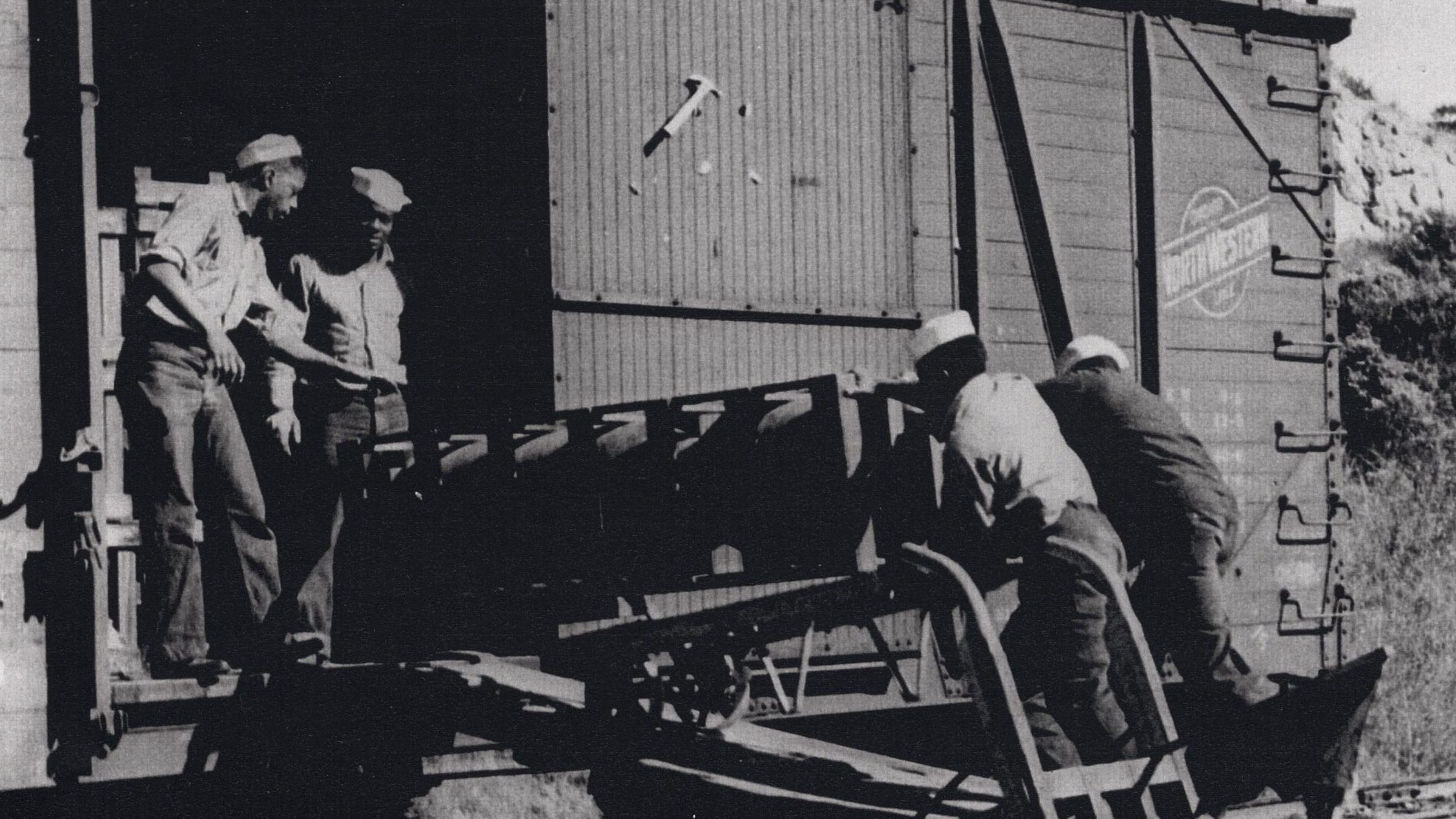

WASHINGTON – The Secretary of the Navy announced on July 17 the full exoneration of the remaining 256 defendants of the 1944 Port Chicago general and summary courts-martial. Carlos Del Toro, Secretary of the Navy, announced the exonerations on the 80th anniversary of an explosion at Port Chicago Naval Magazine in California, just inland from San Francisco, that killed 320 people, injured 400 others, destroyed two ships and a train, and caused damage to the nearby town of Port Chicago.
The 256 men were convicted at courts-martial of refusing orders and mutiny when they refused to return to work after the blast without safety precautions. Those convictions and the various punishments handed down had mostly been reversed or pardoned in recent decades, but families of the men — the last of whom passed away in the 1990s — had lobbied for an official exoneration in which the Navy declared the men innocent of any wrong doing.
That declaration came Wednesday.
“The Port Chicago 50, and the hundreds who stood with them, may not be with us today, but their story lives on, a testament to the enduring power of courage and the unwavering pursuit of justice,” said Secretary Del Toro. “They stand as a beacon of hope, forever reminding us that even in the face of overwhelming odds, the fight for what’s right can and will prevail.”
An explosion, and a refusal
The 256 Black sailors were assigned to Port Chicago’s ordnance battalions, working as longshoremen to load ammunition and bombs onto boats to be sent overseas during World War II. A subsequent Navy investigation found that safety on the piers and in the warehouses of Port Chicago was, at best, an afterthought, as the Black enlisted men loaded ever more cargo shipments under mostly-white officers.
On July 17, 1944, an explosion occurred inside an ammo boat. The cause of the explosion was never determined but the blast tore apart two cargo ships and leveled buildings 1,000 feet in every direction at the river city of Port Chicago.
According to a Navy history of the blast, at just after 10 p.m., “a dull clang (possibly caused by a falling cargo boom) and a sound of splintering wood preceded a blinding flash and heavy detonation on the pier, followed within seconds by smaller detonations and then the massive explosion of munitions in E. A. Bryan’s holds. The ship, most of the pier, all structures within a 1,000-foot radius, and many of the flatcars disintegrated. The explosion blew Quinault Victory into large pieces that sank in the waters of Suisun Bay. A Coast Guard fire barge was blown away from the munitions pier and sank, taking its 5-man crew with it. The 320 individuals in the immediate proximity of the blasts— Navy personnel on the loading details, a Marine Corps sentry, the ships’ Navy Armed Guard and merchant mariner crews, and civilian employees—were killed instantly. Of these, the remains of only 51 were identifiable afterward. African American Sailors comprised nearly two thirds of those killed.”
The 256 Black men who survived the explosion were put back to work immediately — unlike their white comrades — in similarly hazardous conditions at a second Navy ammo dump. When the Black sailors refused to work without safety considerations, the were threatened with a court-martial. Eventually, 206 returned to work, but were all booted from the Navy with fines and bad discharges. A final 50 who refused were charged with mutiny and received long prison sentences.
A final Navy investigation cleared workers at the base of wrong doing, instead finding that leadership and operational practices at the pier led to disaster. Specifically, the investigation cited:
- By 1944, wartime operational requirements had nearly maximized Port Chicago Naval Magazine’s operational capacity;
- Despite ongoing attempts to make up for shortfalls, proper munitions-handling training of officers and men was uneven at best;
- Ever-increasing operational requirements invariably led the command to override a number of basic safety procedures;
- At the time, the U.S. Navy Board of Ordnance instructions did not sufficiently cover all aspects of ordnance safety and handling in port during wartime. Port Chicago only selectively followed the standard—and more specific—U.S. Coast Guard instruction, compiled in 1943, due to the high operations tempo.
In studying the case, the Navy said Mondy, the General Counsel of the Navy concluded that there were “significant legal errors during the courts-martial. The defendants were improperly tried together despite conflicting interests and denied a meaningful right to counsel. The courts-martial also occurred before the Navy’s Court of Inquiry report on the Port Chicago explosion was finalized, which certainly would have informed their defense and contained nineteen substantive recommendations to improve ammunition loading practices.”
If any family members of the defendants of the 1944 Port Chicago general and summary courts-martial would like to reach out to the Department of the Navy for future notifications on the topic or more information, please reach out to PortChicago@us.navy.mil, or 703-697-5342.
The latest on Task & Purpose
- Here are the ships the U.S. plans to sink in the Pacific this summer
- USS John Basilone, warship named for legendary Marine, delivered to the Navy
- Army graduates first class of recruiting warrant officers
- Navy fires captain of ship that ran aground in Africa
- Do I have to go to my IRR muster duty event?